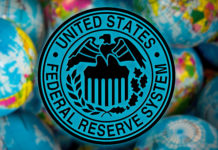After its last meeting, the BOC Governor Macklem said that the likely course would be a pause, unless there was a major change in the data. Of course he said it with a lot more words and technical jargon, but that was the essence of the message. Naturally, the markets adjusted the expectation to the BOC holding rates steady.
The latest inflation data pointed to a strong deceleration. Even though the rate remains well above target, there is always some delay between when rates are raised and when inflation comes down to an acceptable range. So, it’s expected that the central bank will stop raising when inflation starts to show signs it’s coming under control, and not necessarily has reduced all the way.
What changed?
Inflation figures were in line with expectations, confirming the view for the BOC. But, the unemployment rate showed a surprise build. Over 100K people found jobs in December, well above the 7K expected. It is true that Canada has some wildly fluctuating jobs numbers. But given the context of the BOC saying it was going to be data dependent for the next meeting, the consensus now shifted to expect a 25bps hike at the next meeting.
The context has implications beyond Canada, since the US faces similar economic conditions, and often the two central banks move in tandem. Inflation in the US has been coming down, but the jobs market remains surprisingly resilient. The prior months had seen slow jobs growth in Canada, leaving the impression that Canada could exit the rate hiking cycle sooner than its southern neighbor. But, if the BOC raises rates, it could have a somewhat diminished impact on the USDCAD, as traders weigh whether the strong jobs numbers seen in the US would also imply the Fed will move higher as well.
What about further down the road?
The other aspect is the global economy. Most of the reduction in inflation came from lower fuel prices. Wholesale food prices diminished, but not what shoppers were paying at stores. Meaning that the average Canadian might not notice the improving price situation, and in turn that could continue to impact consumer demand.
What is more directly correlated to the currency market, however, is the price of crude. As Canada’s main export the drop in petroleum prices naturally affected the CAD. But, now that China is reopening faster than expected, there is renewed speculation that crude prices could continue to appreciate. Particularly in the context of the latest IEA report, which forecasts demand for crude to reach a historic peak in the next year, while supplies remain constrained.
Potential market reaction
It’s expected that after this rate hike, the BOC will once again say that it expects a pause, depending on the data. The other option is that it could surprise the markets by not raising rates. That could be because it discounts the jobs data as a one-off, and heavily imply that it could rates rates at the next meeting. Both courses of action would likely leave the long-term outlook for the CAD in the same place, but could provide some short-term volatility.














